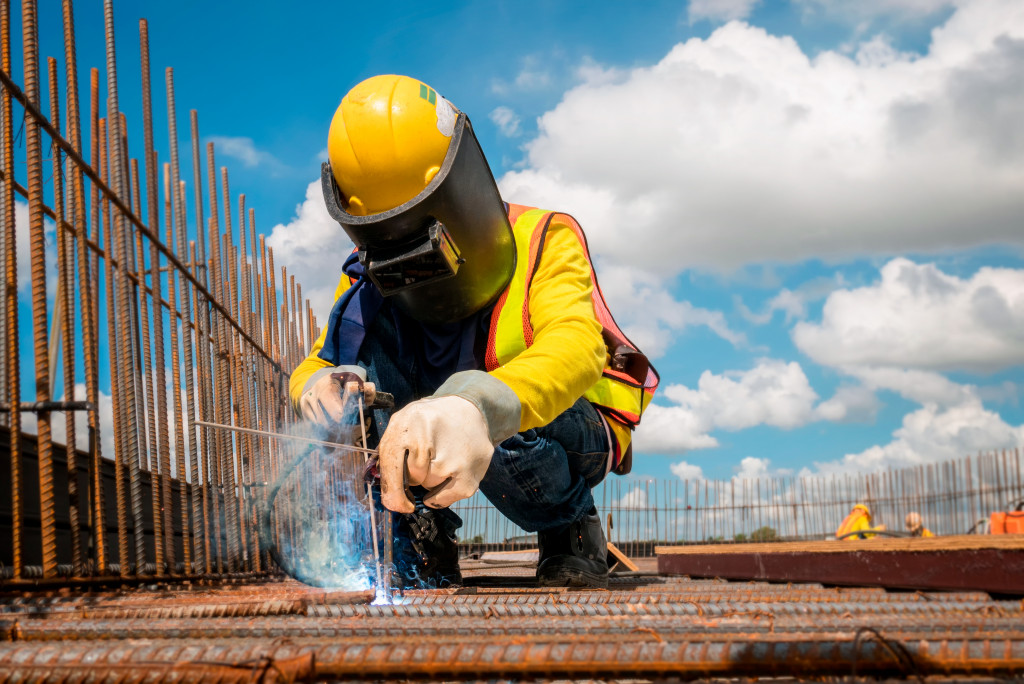- Volunteer builders need appropriate Personal Protective Equipment (PPE) for protection against construction site hazards.
- Proper training on equipment use, safety protocols, weather complications, and fire safety is crucial for volunteer builders.
- Maintaining vigilance and open communication helps identify and mitigate potential risks on a construction site.
- Recognizing signs of fatigue and stress and taking necessary breaks are key to maintaining personal well-being and safety.
For volunteer builders who participate in nonprofit work, safety should always be the top priority. These volunteers are often not experienced professionals and may lack the proper knowledge and training to work in a high-risk environment. The importance of safety cannot be overstated when it comes to construction work. This blog post will provide some essential tips to ensure that volunteers are safe when assisting in constructing nonprofit buildings.
Use Appropriate Equipment
Volunteers should first ensure that they have the correct personal protective equipment (PPE) before engaging in any construction work. PPE includes hard hats, gloves, work boots, goggles, and harnesses, among others. The equipment must fit well and be worn correctly. Here are other pieces of equipment to be prioritized:
Ear Protection
Volunteer builders should never underestimate the importance of ear protection on a construction site. Prolonged exposure to loud noise is one of the leading causes of hearing loss, and it can happen without the individual even realizing it. Earplugs or earmuffs should be an integral part of the personal protective equipment. It’s crucial to ensure they fit well and are worn correctly for optimal protection.
Respiratory Protection
Respiratory protection is another essential piece of safety gear on construction sites. Construction work often involves exposure to various kinds of dust, fumes, and other harmful airborne particles. Wearing a suitable respirator can help filter these particles and prevent them from entering the respiratory system. It’s crucial to select a respirator that fits well and is designed for the specific type of exposure expected on the job.
Fall Protection
Falls rank high as one of the leading causes of severe work-related injuries and fatalities, making them a significant concern in occupational safety. For this reason, efficient fall protection systems are vital in any construction environment. Volunteers should, therefore, be provided with the necessary equipment, such as harnesses and safety nets, to prevent fall accidents. Adequate training on how to use this equipment properly is also crucial.

Proper Training
Volunteers should never be allowed to participate in construction work without proper training. Nonprofit organizations must provide such training that helps the volunteers understand the proper techniques and tools for the job. This training must cover the most critical aspects of safety and health-related issues. Here are things for volunteers to familiarize themselves with:
Safety Protocols
Safety protocols are a crucial part of any construction project, particularly for volunteers who may not be familiar with standard procedures. These protocols may include everything from correct tool use, equipment handling, and what to do in case of an emergency. Volunteers should be thoroughly briefed on these rules before they begin work on the site.
Weather Complications
Weather conditions can significantly impact construction work and pose potential safety risks. As a volunteer, it’s essential to be aware of how different weather types affect construction activities. For example, rain can make surfaces slippery, increasing the risk of slips and falls, while high winds can cause instability, particularly at height. Similarly, extreme heat can lead to dehydration and heat stroke.
Fire Safety
Fire safety is a critical consideration on any construction site. Flammable materials, electrical equipment, and open flames can all contribute to potential fire hazards. For volunteer builders, understanding basic fire safety principles is crucial. They should know where fire extinguishers are located, how to use them, and what action to take in case of a fire. Familiarity with evacuation routes and assembly points is also essential.

Stay Alert and Communicate
Maintaining constant vigilance and open communication is paramount on any construction site. Volunteers should always be aware of their surroundings, keeping an eye out for any potential hazards.
Equally important is clear and regular communication with the team. Whether it’s discussing the day’s tasks, reporting a safety concern, or calling out a hazard, effective communication can be the difference between a safe day on the site and a dangerous incident.
Furthermore, all volunteers should always be on the lookout for signs of fatigue, stress, or any other physical issues that could affect their performance. Taking a break or asking for help is not a sign of weakness — it’s simply part of staying safe and healthy on the job.
Volunteering for nonprofit organizations that involve construction work can be a valuable and satisfying experience. However, it is vital to ensure that safety is always a top priority. By following the tips above, volunteer builders can help to reduce the likelihood of accidents and injuries on the construction site. This, in turn, can result in successful construction projects that can benefit many people in the community. Remember, safety is critical.
